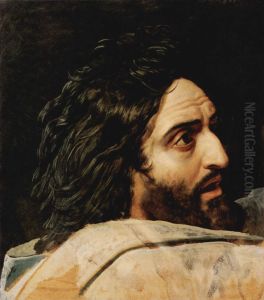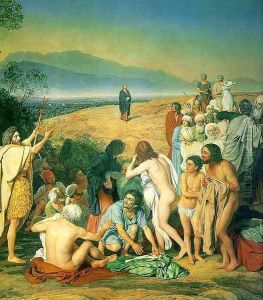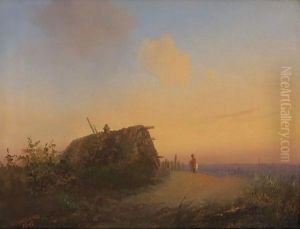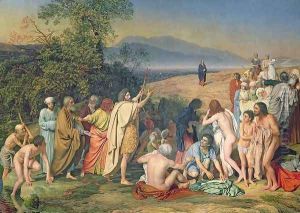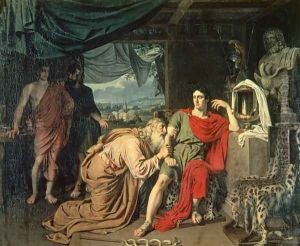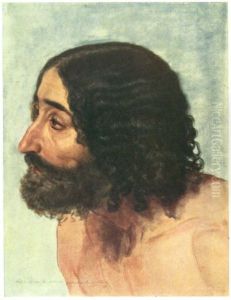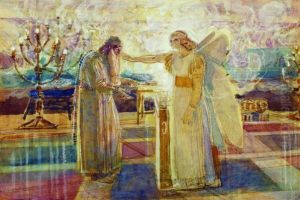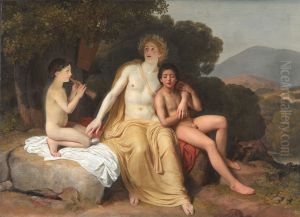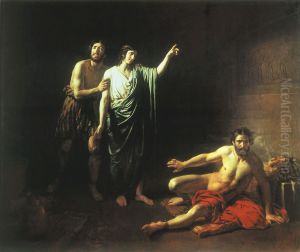Alexander Ivanov Paintings
Alexander Andreyevich Ivanov was a Russian painter who played a significant role in the development of Russian Neoclassical art. He was born on July 28, 1806, in St. Petersburg, Russia, into a family with a strong artistic background; his father, Andrey Ivanovich Ivanov, was a well-known Russian sculptor. Alexander received his early education at the Imperial Academy of Arts in St. Petersburg, where he studied under his father and other prominent artists of the time.
Ivanov's early works were primarily historical and biblical scenes, characterized by their careful composition, clarity, and serene beauty. His style reflected the influence of Neoclassicism, which was prevalent during his time, but he also sought to bring a deeper, more emotional expression to his paintings. Ivanov was particularly interested in the integration of classical ideals with naturalism, and he aimed to achieve a harmonious balance between the two in his works.
In 1831, Ivanov traveled to Italy, where he would spend a significant portion of his life. The Italian landscape, classical ruins, and exposure to the works of the Renaissance masters had a profound impact on his artistic development. It was during his stay in Italy that Ivanov began working on his magnum opus, 'The Appearance of Christ Before the People' (also known as 'The Apparition of Christ to the People'), which he started in 1837 and completed in 1857, just a year before his death. This monumental painting, measuring over 5 by 7 meters, is a testament to Ivanov's ambition to create a grand historical narrative that was both spiritually uplifting and aesthetically captivating.
Despite his dedication and the high quality of his work, Ivanov's paintings were not well received during his lifetime. His meticulous approach to painting and attention to detail meant that he worked very slowly, resulting in a relatively small body of work. Additionally, his focus on religious and philosophical themes was often out of step with the tastes of the contemporary art market.
Alexander Ivanov passed away on July 3, 1858, in St. Petersburg. After his death, his reputation grew, and he became regarded as a key figure in Russian art history. His emphasis on spiritual and moral content in art had a lasting influence on future generations of Russian artists. Today, Ivanov's works are held in high esteem and can be found in major Russian museums, including the Tretyakov Gallery in Moscow and the Russian Museum in St. Petersburg. His dedication to his craft and his unique blending of classical and naturalistic styles continue to be celebrated by scholars and art lovers alike.
